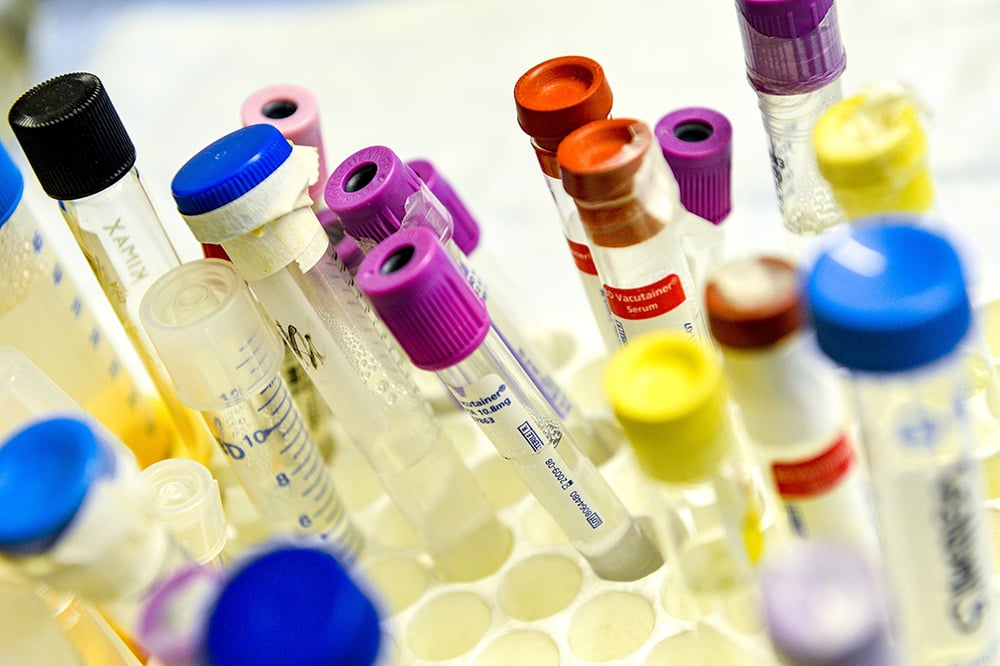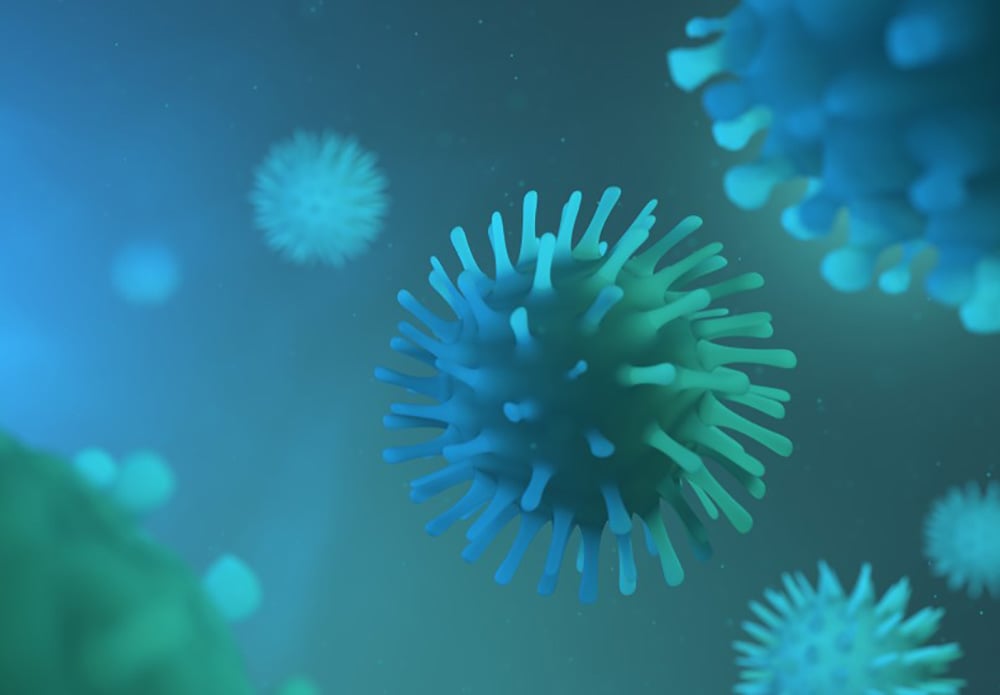Every day politicians promise eventual relief from the threat of COVID-19 with a vaccine. An unprecedented scientific race to develop more than 100 of them is now underway. But don’t roll up your sleeve yet. Any promise of a technical solution for a global pandemic remains a great gamble for a variety of reasons.
So we had better develop a robust Plan B: Get very good at living with the coronavirus in our midst, keeping large outbreaks to a minimum. The key to this, lacking a super effective vaccine, is: test, trace and isolate. Repeat. Repeat. And repeat again. We have the means to do this now, and it should become our way of life for many months, and likely years, to come.
Why should we be wary of the promise a vaccine will deliver us any time soon from the coronavirus?
Some viruses are more ‘wily’ than others. Vaccines are artificial tools to confer immunity to diseases. Instead of waiting for natural immunity and disease cycles to do the often deadly and random job, our civilization now depends on the efficiency of vaccines. Immunization is as much a part of modern civilization as the highway.
Vaccines, however, have their limits and can also suffer from diminishing returns. The evolutionary biologist Paul Ewald has noted that humans have used vaccines for the last 200 years to conquer the easiest adversaries: measles, diptheria, rabies, polio and smallpox. “We are now left with the more wily ones which will probably evade our vaccination efforts by changing their coats.” Malaria and viruses like HIV are masters at evading the immune system.
Vaccines tend to take a long time to find. A good vaccine, a product of sweat and tears, does not resemble a downloadable app. It normally requires eight to 15 years of laboratory tinkering, animal tests and finally human trials to ensure its safety and efficacy. It’s a fraught and cumbersome process because the immune system is unique and reacts to different viruses and bacteria in constantly evolving ways.
Human trials alone must go through three stages: healthy volunteers are injected first to test safety. That’s followed by vaccination of several hundred people to pinpoint the quality of the immune response. In the third phase, a larger population is tested to see if the vaccine actually prevents disease in an infected area.
After a vaccine has been licensed researchers need to do more tests. Then they must study changes in vaccine formulation, the number and timing of doses for different ages and so on.
Few vaccines are perfect and some go haywire. Ideally, a good vaccine should not cause disease or adverse effects. It should be easy to administer and be free of contaminants. It should induce long-lasting immunity. Unfortunately, reality is more complicated. As one science journal article put it, “current vaccines do not typically meet all of these criteria. Most possess limited efficacy or have unwanted side effects.”
In fact the history of vaccine safety is littered with human mistakes, production errors, contamination issues, adverse reactions and deadly infections proving once again that all technologies have inseparable good and bad effects.
Oral live polio vaccine, for example, did a great job of conferring immunity, but it also could induce polio. Of the last 162 confirmed cases of polio in the United States, 154 cases were caused by vaccination with oral live polio.
‘Warp speed’ and the risk of crashing
So what could possibly go wrong with a coronavirus vaccine needed in a big hurry for seven billion people?
The first caveat concerns speed. A number of big global players including the World Bank and the Coalition for Epidemic Preparedness Innovations want the COVID-19 vaccine effort to be guided by “speed, manufacture and deployment at scale.” The U.S. government hopes “Operation Warp Speed” will deliver a vaccine by January like a tardy Christmas present.
Unfortunately, science doesn’t work that way. As previously noted a reliable vaccine can take a decade or more to develop for a well-known virus. (Canadians worked on an Ebola vaccine for 14 years.) Our world of technological bluster now proposes to crunch that time frame to a year and half or less for a poorly understood and novel pathogen racing across the globe.
Dr. David Nabarro, a professor of global health at Imperial College London, identified to CNN several potential speed bumps: “We’re dealing with biological systems, we’re not dealing with mechanical systems. It really depends so much on how the body reacts.”
The second speed bump involves luck. “We can’t make an absolute assumption that a vaccine will appear at all, or if it does appear, whether it will pass all the tests of efficacy and safety,” adds Nabarro.
History also offers a clear lesson on the perils of speed. The last time the U.S. government tried to warp speed a vaccine development it didn’t end well. Consider the swine flu in 1976. When the bug first emerged it looked like real trouble, and that excited the presidency of Gerald Ford. In the ensuring rush one vaccine maker produced two million doses with the wrong strain. Famous white coats Jonas Salk and Albert Sabin, the developers of the polio vaccine, held acrimonious debates about the new vaccine’s effectiveness. But president Ford had a goal: he wanted a million people vaccinated a day by the fall.
Then speed revealed its hazards. People died from the live vaccine. In addition the brisk campaign cultivated more than 400 cases of the paralyzing Guillain-Barré syndrome among the vaccinated.
Meanwhile, the swine flu pandemic never materialized as expected. After only vaccinating 25 per cent of the population, the government shut down the public health debacle. Speed, just like globalization, always comes with risks.
Promising a vaccine, of course, is not the same as delivering one. In 1984, the U.S. secretary of health promised a vaccine for HIV/AIDS in just two years. Since then more than 32 million people have died, and there is still no vaccine, because HIV is one wild shape-shifter of a virus. However, researchers, after much trial and error, did put together an effective anti-viral chemical cocktail for treatment.

Developing a vaccine also doesn’t guarantee it will be useful. Governments mustered vaccines to thwart influenza epidemics in 1957, 1968 and 2009. But to this day experts really don’t know if those vaccines materially made a dent in the spread of disease. One recent study on influenza politely put it this way: “Direct evidence of the effectiveness of specific vaccine prevention and antiviral prevention and treatment strategies for reducing the health impacts of a pandemic is extremely limited.”
Many researchers are also banking their hopes on a new technology never approved for vaccine use. Most vaccines use a dead or modified form of the virus to trigger an immune response. But many researchers have pinned their hopes on a RNA vaccine.
The Atlantic Monthly describes what’s new about this experiment: “An RNA vaccine injects instructions to your cells, and hopes that your cells receive these instructions and follow them, and build the proteins that will teach your immune system to fight a virus. It is a bit like wadding up plans for a Cessna, throwing them through the ventilation shaft of a Ford factory, and hoping that someone inside finds them, and that the factory starts rolling airplanes out its doors instead of pickups.”
Coronaviruses, which cause the common cold, SARS, MERs and COVID-19, pose their own singular challenges. These viruses tend to target the respiratory tract, a region of the body that the immune system has great difficulty protecting from biological assault.
The Australian scientist Ian Frazer, who developed a vaccine for the human papilloma virus that causes cervical cancer, knows a thing or two about this subject. He recently told Australia’s ABC that vaccines for coronaviruses have often made things worse.
Immunization of mice with a SARS corona vaccine “caused inflammation in the lungs that would otherwise have not been there if the vaccine hadn’t been given.” In other words the vaccinated mice got sick more rapidly, and died faster.
Early SARS vaccines tested on ferrets and monkeys stimulated antibodies, but didn’t offer full protection against lung disease either.
Another issue facing effective vaccine development might be what researchers call “perverse outcomes.” They include outright failure in some groups to create immunity as well as “epidemiological shift.” The MMR vaccine neatly illustrates these problems. About 10 per cent of people vaccinated for measles and mumps and rubella, for example, don’t develop antibodies. And so they get measles, mumps or rubella.
Vaccine durability and fallibility
Once a vaccine is proven workable, the work begins deciding who should get it and how to distribute it fairly and widely. There can be hidden repercussions to any chosen course of action. In the 1970s the Greek government vaccinated 50 to 60 per cent of the population against measles, mumps and rubella. That really helped young people. But the MMR program shifted the burden of disease onto older unvaccinated populations, particularly women of child bearing age. By the 1990s Greece recorded the “the highest incidence of congenital rubella syndrome” in the world.
In other words, if everybody isn’t vaccinated, the technology can produce “perverse outcomes,” whereby “disease severity increases with age at infection.”

Another issue is the durability of immunity conferred by the vaccine. Some vaccines such as those against tetanus last 10 years. The flu vaccine is only good for a couple of weeks or months.
Nobody at this point can say whether the COVID-19 vaccine will be good for a month or a year. But if immunity doesn’t last long, then society has got another problem: how often can it ask the world’s citizens to roll up their sleeves? And who will pay the cost every year?
The next challenge arises in assuring safe delivery of the vaccine depending on what type is developed. Most vaccines have to be kept cold (between 2 and 8 degrees Celsius) as they journey from a factory to the airport to a storage centre to another airport to a health centre and finally to a remote village or congested city.
Along the way, vaccines can spoil if not refrigerated properly resulting in a lot of waste. A recent report by the International Federation of Pharmaceutical Manufacturers & Associations concluded that less than one-quarter of countries were operating at “the minimum Effective Vaccine Management levels” and that nearly one-third barely met “minimum standards for temperature control.” Any coronavirus vaccine would enter this world of complexity resulting in spoilage, the administration of incorrect vaccines, accidental overdoses, expired vaccines and other human foibles.
Once a suitable vaccine has been developed, other obstacles emerge. Scaling up production can be costly. Factories capable of producing large quantities of product must be identified. Technologies need to be transferred, and manufacturing processes adapted. To date the global economy hasn’t done very well on that front for products as simple as masks, PPE and COVID-19 tests.
Vaccine supply chains are also fragile and complex creatures of globalization, dogged by logistical glitches. As a 2017 report concluded, “many vaccine supply chains around the world have substantial constraints and bottlenecks and are not delivering vaccines to many people who need them.” The study adds that “Supply chains issues have hindered efforts to control, eliminate, or eradicate diseases such as polio and measles.”
Once a vaccine has appeared, the next question concerns equality of access. “It must be made available to populations in need — perhaps to frontline health workers first, and then to the elderly and others, and it will be a real issue to make sure that there is equity,” infectious disease expert David Heymann recently told Reuters.
But many researchers fear that won’t happen because of “vaccination nationalism.” Won’t rich states use a vaccine developed within their borders to immunize their own people first? Great disparities in vaccine access is old news and already exist in wealthy places like the United States. There, the poor and people of colour are usually at the end of the line. Equal access to a corona vaccine could generate another political crisis.
Another wildcard in the mix is that of the more than 100 COVID-19 vaccine efforts underway, about 10 have moved to clinical trial stage and the companies or research institutes dominating these efforts are Chinese. It is entirely conceivable that China might win the COVID-19 vaccine race. Will people outside of China trust a vaccine coming from a repressive state that covered up the emergence of the virus in the first place?
China, which has shipped to Canada a million masks that proved faulty, doesn’t have a stellar record with vaccine safety either. A major scandal erupted in 2018 when a bad diphtheria, tetanus and whooping cough vaccine was administered to 200,000 children.
And of course in this age of falsehoods made viral via the internet, any vaccination effort will run up against conspiracy theorists and anti-vaxxers sowing doubt among a population that needs to be on board.
To be clear, this article is not intended in any way to contribute to the spread of such destructive disinformation. Vaccine science is real and when they work, vaccines are vital to public health. The aim of this piece, however, is to soberly outline the odds arrayed against producing a thoroughly effective vaccine, arguing therefore that we should not pin all our hopes on that prospect. Instead, we must look to other ways to cope.
Citizens must press their politicians to re-localize their economies and improve food security by dismantling concentrated production where outbreaks are occurring.
Nations need to invest in the capacity to make their own medical equipment, drugs and basic science such as that conducted by Canada’s famous national Connaught Laboratories before they were dismantled.
And while we wait for the virus to either burn itself out or succumb to a hoped for but anything-but-certain vaccine, we should deliver a clear mandate to our public health officials and political leaders: pay rigorous attention to the low-tech essentials. Those would include comprehensive testing. Tracing of infected contacts — which can be done without Orwellian surveillance apps. And providing proper support for those who need to be isolated in order to keep wider infections to a minimum. ![]()
Read more: Health, Coronavirus, Science + Tech
















Tyee Commenting Guidelines
Comments that violate guidelines risk being deleted, and violations may result in a temporary or permanent user ban. Maintain the spirit of good conversation to stay in the discussion.
*Please note The Tyee is not a forum for spreading misinformation about COVID-19, denying its existence or minimizing its risk to public health.
Do:
Do not: